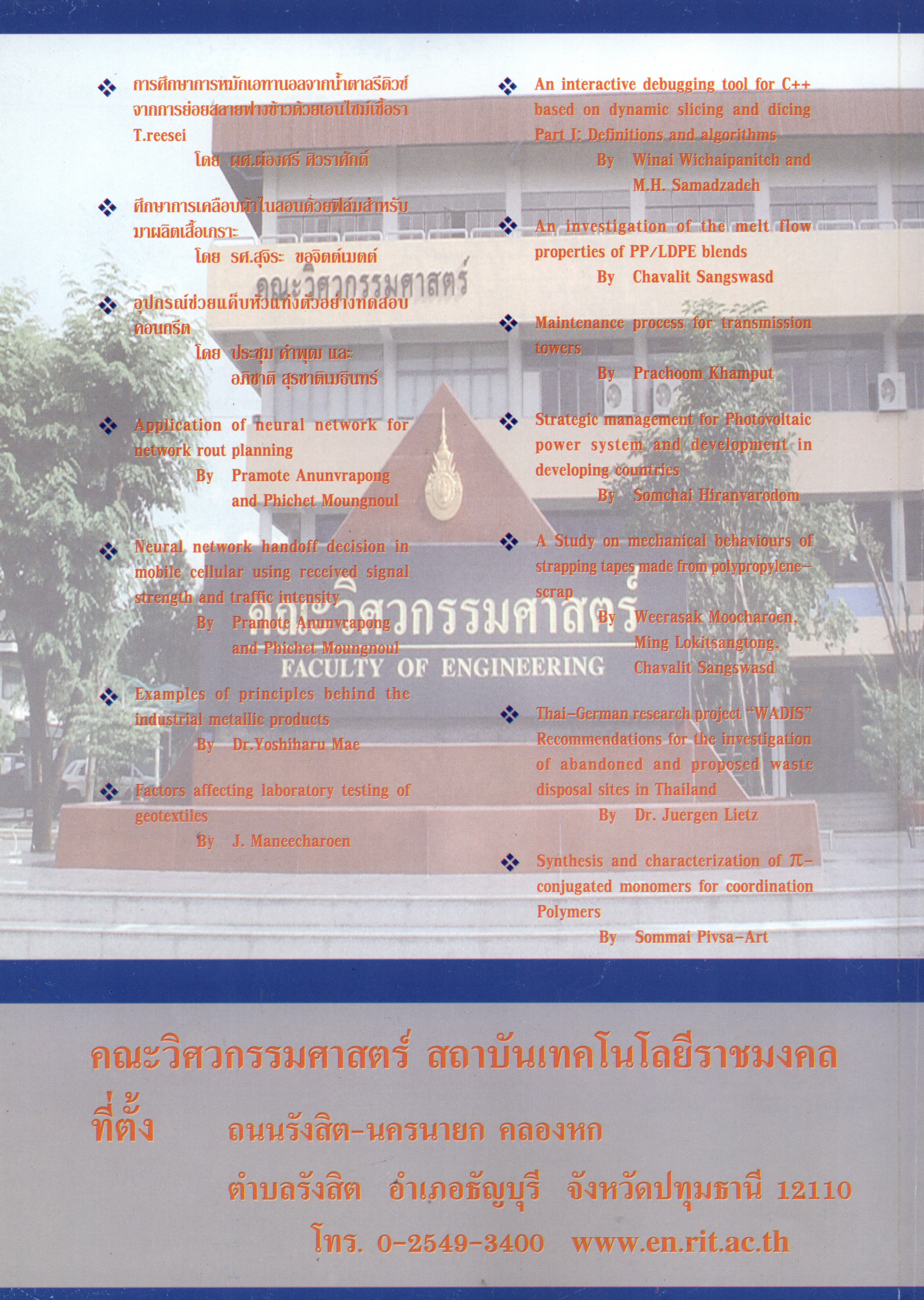Neural Network Handoff Decision in Mobile Cellular using Received Signal Strength and Traffic Intensity
Main Article Content
บทคัดย่อ
This paper proposes the handoff approach by means of Neural Network for mobile telephone system, such as Global System for Mobile communication (GSM), especially focus on received signal strength (RSS) and traffic intensity (TI). A model of Base Transceiver Station (BTS) or cell, 7 cells, that have several traffic intensity. And using the principle of the mobiles in the hysteresis area can connect to more than one cell for handoff to the lower traffic intensity cell. The result shown that the proposal can reduce the drop calls, keeps the call blocking for acceptation of Grade of Service (GOS) and decreases the unnecessary handoffs)
Article Details
บทความ ข้อมูล เนื้อหา รูปภาพ ฯลฯ ที่ได้รับการตีพิมพ์ในวารสารแนวหน้าวิจัยนวัตกรรมทางวิศวกรรม ถือเป็นลิขสิทธิ์ของวารสารฯ เท่านั้น ไม่อนุญาติให้บุคคลหรือหน่วยงานใดคัดลอกเนื้อหาทั้งหมดหรือส่วนหนึ่งส่วนใดไปเผยแพร่เพื่อกระทำการใด ๆ ที่ไม่ถูกต้องตามหลักจริยธรรม
เอกสารอ้างอิง
[2] L. Jantarakul, "The Load Sharing Strategy Following The Neighbor Cell Traffic in Mobile Telephone System" Mater Thesis,Chulalongkorn University
[3] W. R. Mende, "Evaluation of a Proposed Handoff Algorithm for the GSM Cellular System," Proc IEEE VTC.,Orlando, USA,1990.
[4] E.J. Wilmes, K.T. Erickson, "Two Methods of Neural Network Controlled Dynamic Channel Allocation for Mobile Radio System,"Proc. IEEE Globecom, pp.746-750, 1996
[5] N. Zhang and J. M. Holtzman, "Analysis of Handoff Algorithms Using Both Absolute and kelattive Measurements," IEEE Trans. On Veh. Technol, Vol.45, No.1., February.1996

